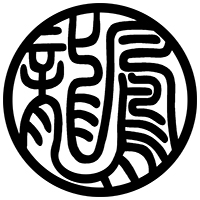Courses 課程
-
-
-
Dojos 道場
-
-
Resources 資源
-
-
-
-
|
 |
Ancient Ryukyuan, Japanese, and Chinese Hair Styles
Scot Mertz - 17 June 2025
|

Historically people in different regions of Asia had somewhat different ideas on
hairstyles and fashion. The hairstyles should be noted for historical accuracy.
1. Ryukyuan Hairstyle - This style was called Katakashira (カタカシラ).
Nobility and the privileged class typically pulled their hair to the left side of
their head, forming a bun located slightly behind the left ear. In contrast,
common people (non-nobility, farmers, merchants) would wear the bun on the
right side of their head.
According to folklore preserved by the Monk Tonochu (in the Ryukyu Shinto-Ki), an ancient group of people from a demon-filled land visited the Ryukyu islands. These warriors battled demons, and if they could cut off one of the
demon's horns, the demon would become mortal. As a result, the Ryukyuan people adopted the tradition of wearing one bun (representing a horn) to signify that they were ordinary people and not possessed by a demon.
2. Ryukyuan Topknot - After the 1609 invasion of the Ryukyu Kingdom by
Satsuma, the hairstyle transitioned from the left bun to a more traditional
topknot, with the bun positioned at the back center of the head. This style
resembled the Chinese hairstyle that was popular during the Ming Dynasty.
3. Chinese Queue (Cue) 辮子 Hairstyle - This hairstyle was introduced during
the Qing Dynasty and was one of the only accepted styles from 1644 to 1912
in China. Many Sapposhi visiting the Ryukyu Kingdom would have worn this
hairstyle. Individuals in China who did not adhere to the approved hairstyles of
the era were considered outlaws, and failure to comply could result in
execution for treason.
4. Japanese Hondamage/Chonmage (本多髷/丁髷) - The Chonmage was a
popular hairstyle among the Samurai and nobility during the Edo period. This
hairstyle was originally designed to secure the kabuto helmet in place while in
battle. Prior to the Edo period, many Japanese warriors wore a full head of hair
and a beard. In 1871, the Danpatsu-rei Edict (断髪令) was issued by Emperor
Meiji, effectively banning the wearing of topknots, forcing men of the Samurai
class to cut their hair short.
Chibariyo!
Scot
**The photo at the top of the page was created using Monet/AI.
|
|
 |


